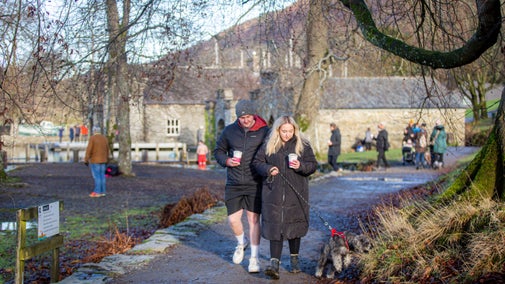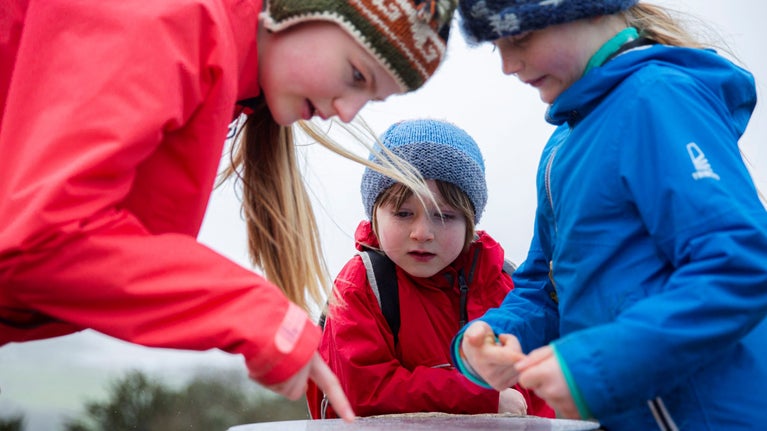
Discover more at Arnside and Silverdale
Find out how to get to Arnside and Silverdale, where to park, the things to see and do and more.
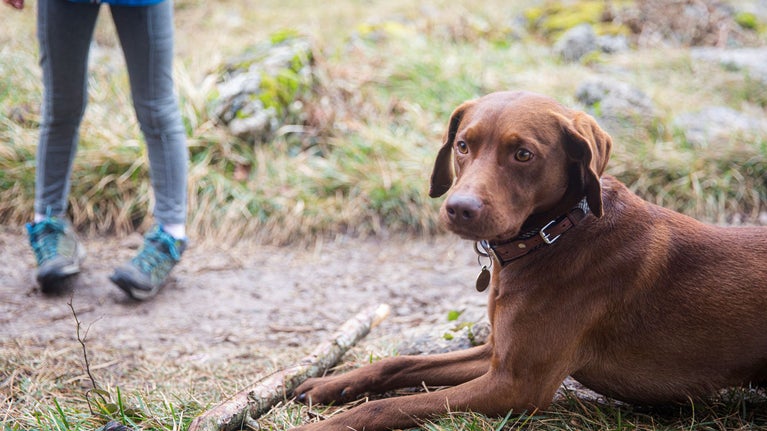
Walking your dog at Arnside and Silverdale can be a joy for both you and your pet. To help keep this special place safe for people and wildlife, we’ve created the Canine Code so that you and your dog can play a part.
We’ve been working on making it easier for you to find out how dog-friendly your visit will be before you and your four-legged-friend arrive. To help with this, we've created a new pawprint rating system and given all the places in our care a rating. You can find this information in the National Trust members’ handbook.
Arnside and Silverdale is a two pawprint rated place.
These places have water bowls, dog bins and dog-friendly walks. You’ll be able to take your dog into some areas, but not everywhere. If there’s a food and beverage outlet, you can have a cup of tea with them, probably outside. Read on to discover exactly where you can take your dog.
The Arnside and Silverdale area is home to several plants and animals which are sensitive to being disturbed. You can help to protect the wildlife here by keeping your dog under close control or, if your dog is especially lively or can be a bit unpredictable, by keeping them on a short lead.
Cows and sheep graze here throughout the year, which helps keep down scrub and encourage wildflowers to flourish. In spring, tenant farmers have pregnant ewes and lambs out in the field. Dogs off leads can cause harm to farm animals and this has an impact on farmers’ livelihoods.
The fear caused by just one dog allowed to run free in a field can be fatal for cows, sheep and lambs. You can reduce the risk of disturbing and injuring farm animals by keeping your dog on a short lead.
If you are approached by cattle with your dog, it is safer to let go of the lead and call your dog back when safe to do so.
We’ve worked with our partner Forthglade to come up with this Canine Code, which helps to make sure everyone can enjoy their day:
Our definition of close or effective control is:
We’re so lucky to care for such amazing wildlife and we do our best to ensure the safety of all species.
Unfortunately breeding wading birds at the coast often get disturbed by dogs running through the middle of them, causing them to leave their nests and chicks. This also happens in wet coastal fields where wading birds such as oystercatchers and curlews feed on winter fields.
Deer and hares can get chased and injured by dogs that are left to roam. Birds nesting in low shrubs at sites such as Jack Scout can also be disturbed in their nests by inquisitive dogs. Some interactions between dogs and wildlife can be fatal.
Please keep your dog under close control by your side or on a short lead.
Lyme disease is a bacterial infection which can be spread to humans and dogs by infected ticks. Ticks are tiny spider-like creatures found in vegetation such as long grass. They feed on the blood of birds and mammals, including humans and dogs.
Ticks that carry the bacteria responsible for Lyme disease are found throughout the UK and are particularly common in Arnside and Silverdale especially between March and October. Be sure to check yourself and your dog for ticks as soon as possible after walking in the area.
There are council bins for your dog's waste at Eaves Wood in the car park and at the woods at Castle Bank. There's also a Parish Council dog bin at the Lots in Silverdale. Bag it and bin it or take it home with you.

Find out how to get to Arnside and Silverdale, where to park, the things to see and do and more.

We've partnered with natural pet food maker Forthglade so that you and your dog can get even more out of the special places we care for.
Discover the best places for you and your dog to explore, from coastal adventures and dramatic mountains to more leisurely walks and gardens to visit nearby. Plus, find information on dog-friendly cafés and read our Canine Code.
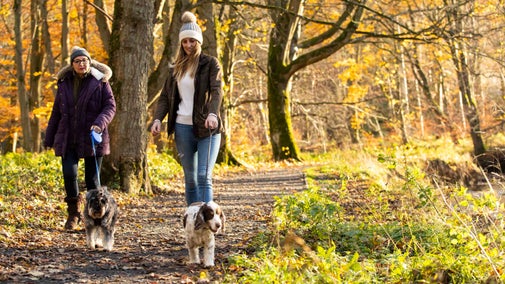
If you’re bringing your dog(s) to the places we care for, you'll find information on our Canine Code and pawprint rating system, created in partnership with Forthglade, to help plan your visit.
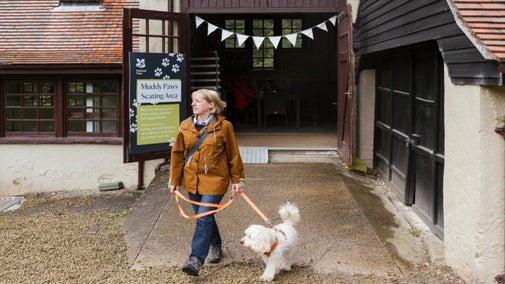
Rest and refuel after getting out in nature with your dog. Here's a selection of the best walks with dog-friendly cafés at places we look after.

We've partnered with natural pet food maker Forthglade to create the Dogs Welcome project, helping you and your dog(s) get the most out of the places in our care.

Explore Arnside and Silverdale in Cumbria, an area of national importance for wildlife such as wildflowers, butterflies, glow-worms and wood ants.
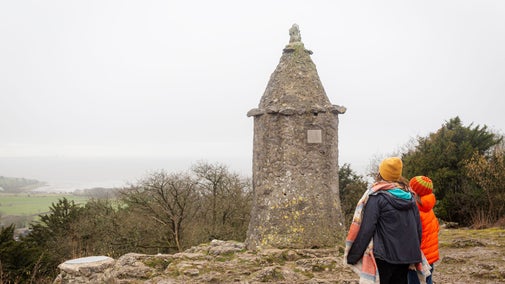
Visit Eaves Wood at Arnside and Silverdale to discover centuries-old yew trees and a monument to Queen Victoria where you can pause to take in the view over Silverdale.

The Lake District has plenty of opportunities for you and your dog to explore some wonderful countryside – from the shores of Windermere to the fell tops in Langdale.
